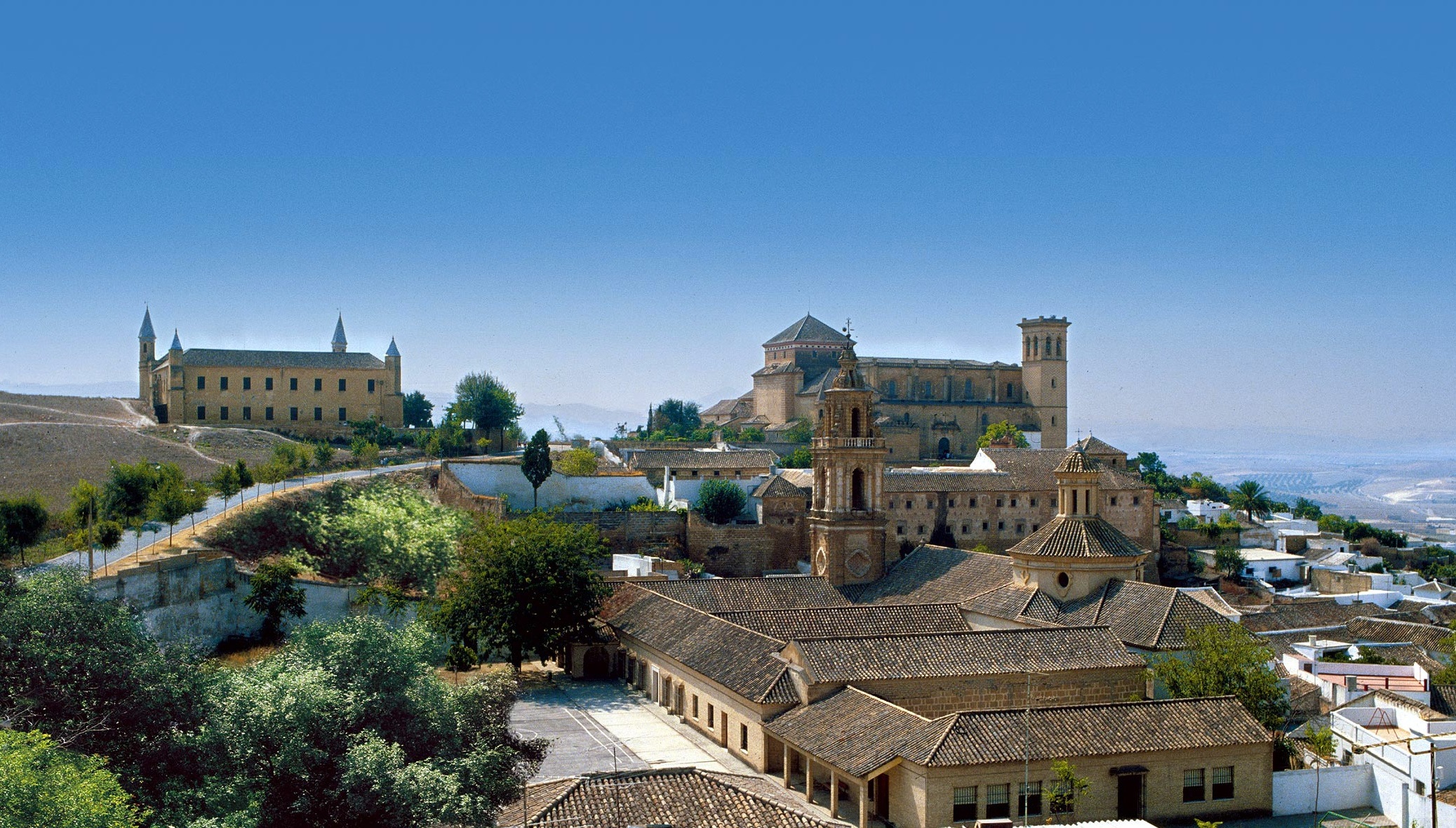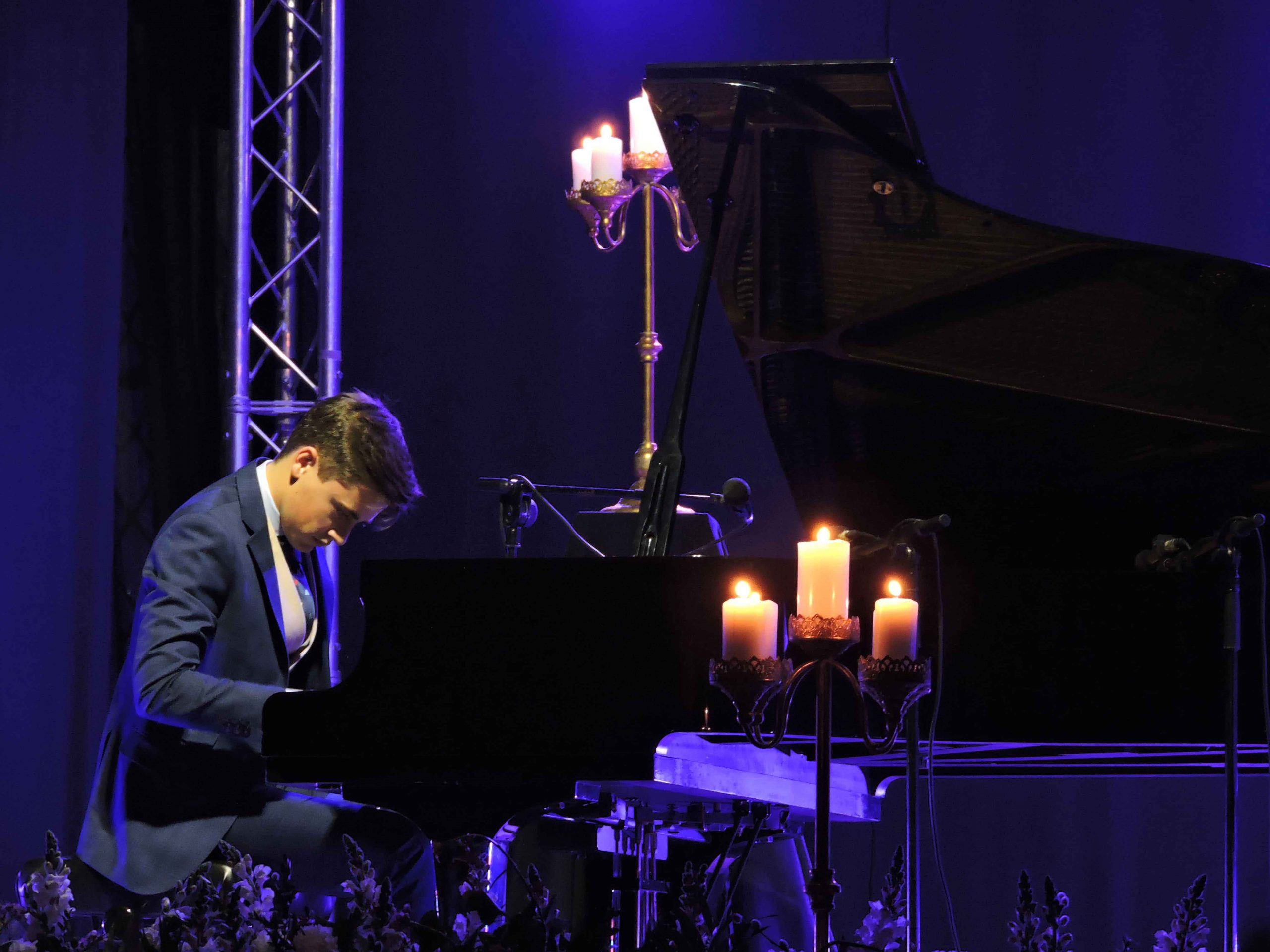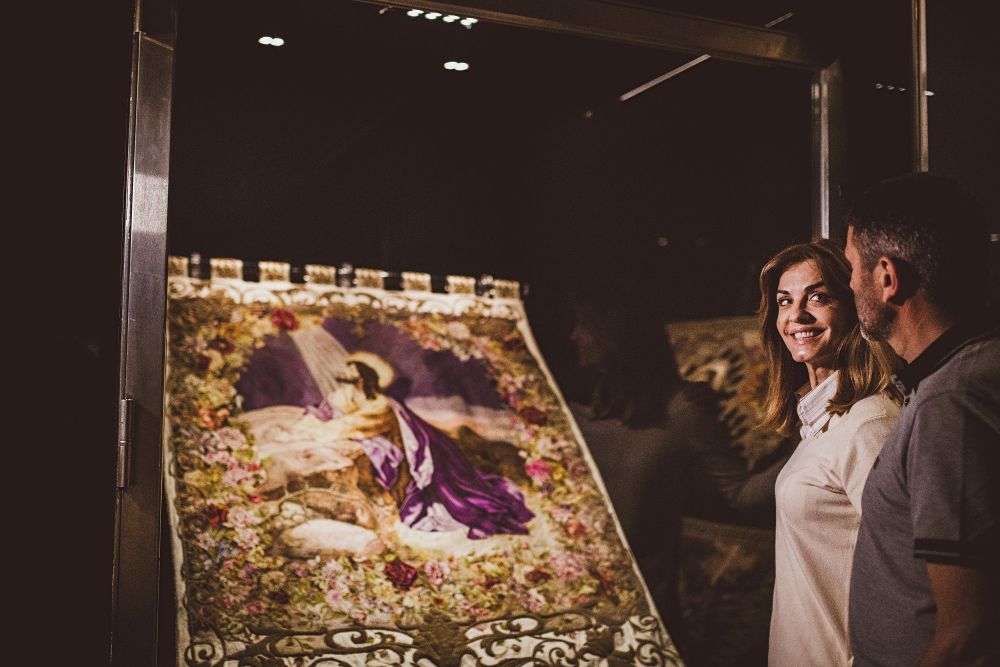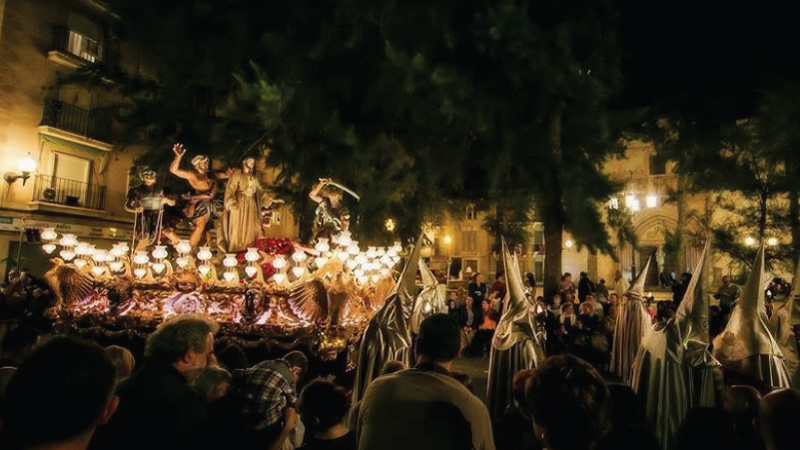
Lucena commemorates the Passion of Christ in its own, unmistakable way, combining art, aesthetics and tradition. The town’s most representative hallmark is La Santería: the special way the floats – or thrones as they are called locally – are carried to the sound of the drum and the untuneful fanfare from the torralbo. For locals, Holy Week is a feeling that is fervently passed down from one generation to another. The town, with a population of almost 43,000, has 16 brotherhoods at present, several of which have existed for over 400 years.
Every day during Holy Week, these brotherhoods take their turn to parade through the streets, filling the town with the sound of their drums and a sense of devotion. La Pollinita, El Huerto and El Encuentro brotherhoods initiate the processions on Palm Sunday. La Pasión takes centre stage with four floats on Monday. Tuesday sees processions from El Carmen, featuring a Pedro de Mena sculpture, Los Servitas and El Amor. The head on the Christ figure in this latter procession was sculpted by Alonso Cano. The next day is reserved for El Valle brotherhood. On Maundy Thursday, the actual day of the passion of Jesus, there are many processions including Santa Fe, La Columna, El Caído and La Sangre. However, the main event of the day is El Silencio, which passes through the town to the solemn beating of black-craped drums and its distinctive bugle call. All of these brotherhoods possess a rich heritage with pieces attributed to renowned sculptors such as Pedro Roldán or José de Mora.
Good Friday is the day of El Nazareno brotherhood, which goes out in procession twice. The first procession includes a sculpture of Jesus carrying the cross on his way to Calvary, accompanied by Veronica, Mary Magdalene, Saint John and the Our Lady of Succour, preceded by the torralbo’s fanfare, a woodwind chamber ensemble and a choir singing the miserere. The proceedings begin at three o’clock in the morning, when the members of the brotherhood are summoned by Lucena’s Brotherhood of Drummers, but the procession leaves the church at six. During the procession, the Gothic image of Christ stops as many as three times to bestow blessings. The brotherhood repeats the same route in the afternoon, this time with the image of Recumbent Christ in a Rococo urn, accompanied by the Holy Cross and the Holy Women. Only one procession remains: that of Our Lady in Her Solitude awaiting Her Resurrected Son, which sets out on Saturday night and arrives at its destination on the seraphic morning of Easter Sunday.

Photo credit: Jesús Ruíz Jiménez
Origins
Lucena’s Easter traditions date back to the early 16th century. The town’s oldest penitential brotherhood is that of La Santa Vera Cruz, which was founded in its own chapel and is known to have maintained several hospitals for the poor prior to 1554. In 1564, it was joined by La Soledad brotherhood, which undertook its station of penance on Good Fridays with sculptures of Saint John and Mary Magdalene at the foot of the Cross and before the Holy Sepulchre. The Franciscan brotherhood, La Pasión, also dates from the same period (1576) and the end of that same century saw the appearance of the Jesús Nazareno brotherhood, which was to become the devotion with the longest history. In 1606, El Carmen brotherhood was founded, with its highly popular Holy Tuesday procession of figures, allegories, Romans, angels, crucified penitents, flagellants and hooded penitents.
La Santería
This term refers to the unique way the floats are carried to a rhythm marked by the solemn beating of a drum. The bearers, called santeros, are organised into squadrons. Apart from taking part in public ceremonies such as the paseíllo, the atado de la almohadilla and Easter processions, they assiduously attend their own special retreats known as Juntas de Santeros.
They wear knee-length tunics over shirts, trousers, short leather boots and neckerchiefs. They wear long hoods on their heads, although their faces remain uncovered. Each brotherhood wears a different colour. The most important santero is the figure known as the manijero, who is in charge of ringing the bell to direct the lifting of the float. The drummers, dressed in a similar costume, mark the pace, changing the rhythm from one image to another.
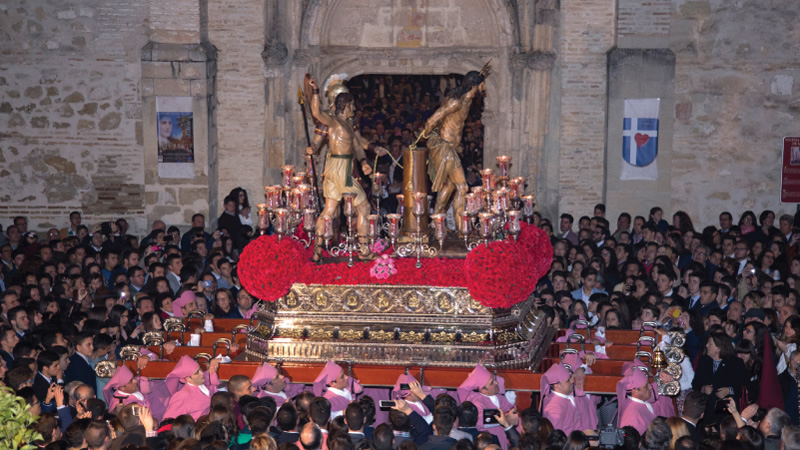
Photo credit: Paseillo.es
The torralbo
Some brotherhoods announce the arrival of their floats with the torralbo, a short, melodic three-part bugle call.
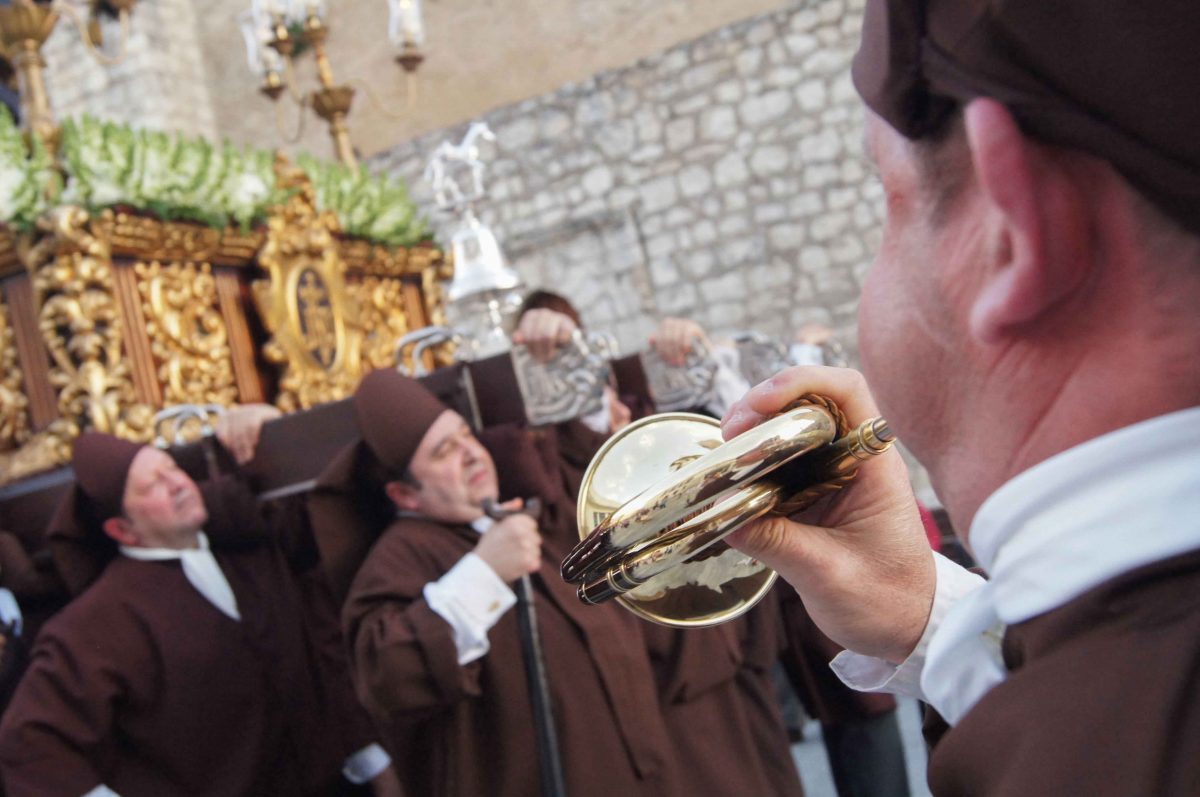
Photo credit: Paseillo.es


